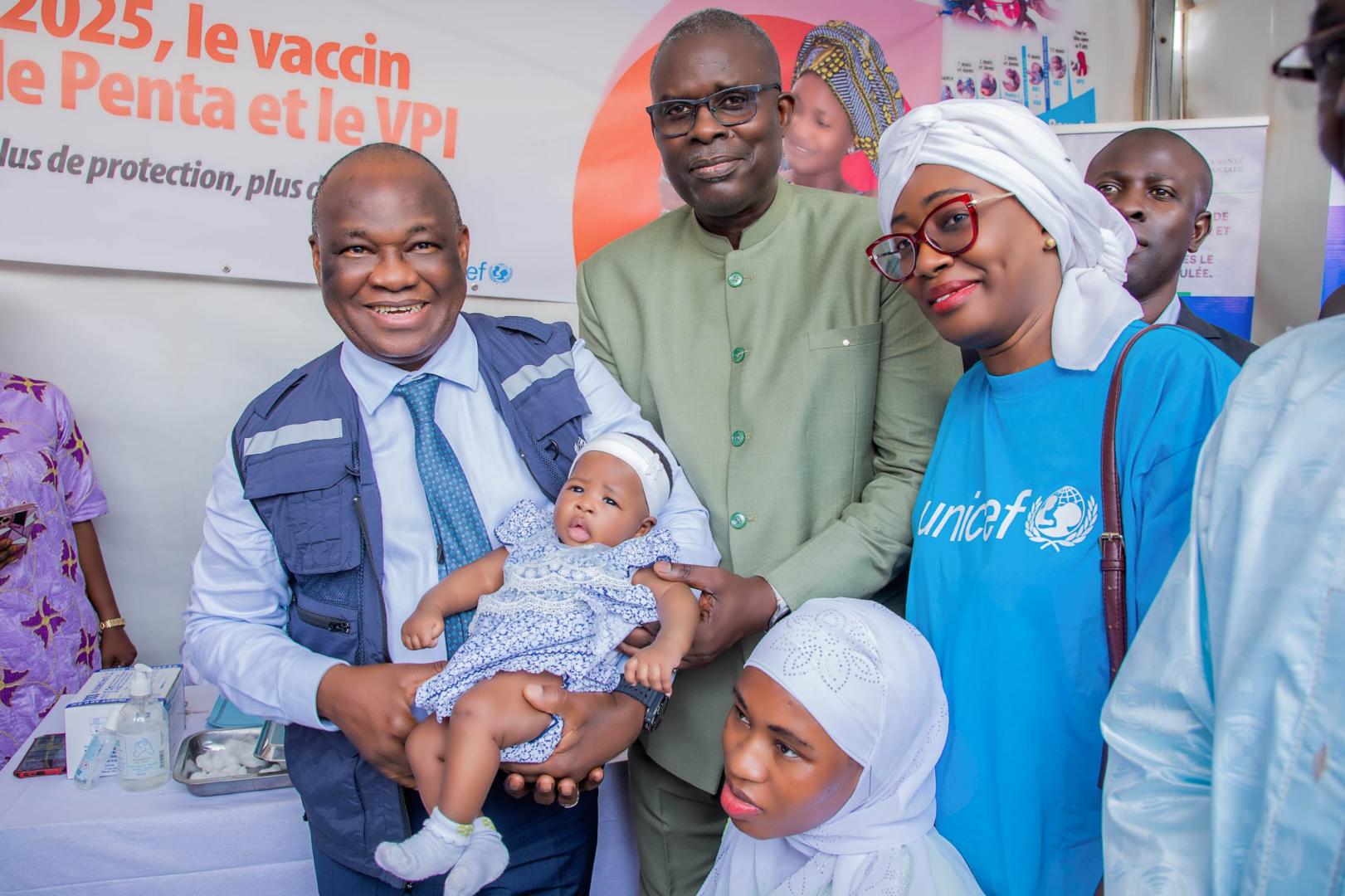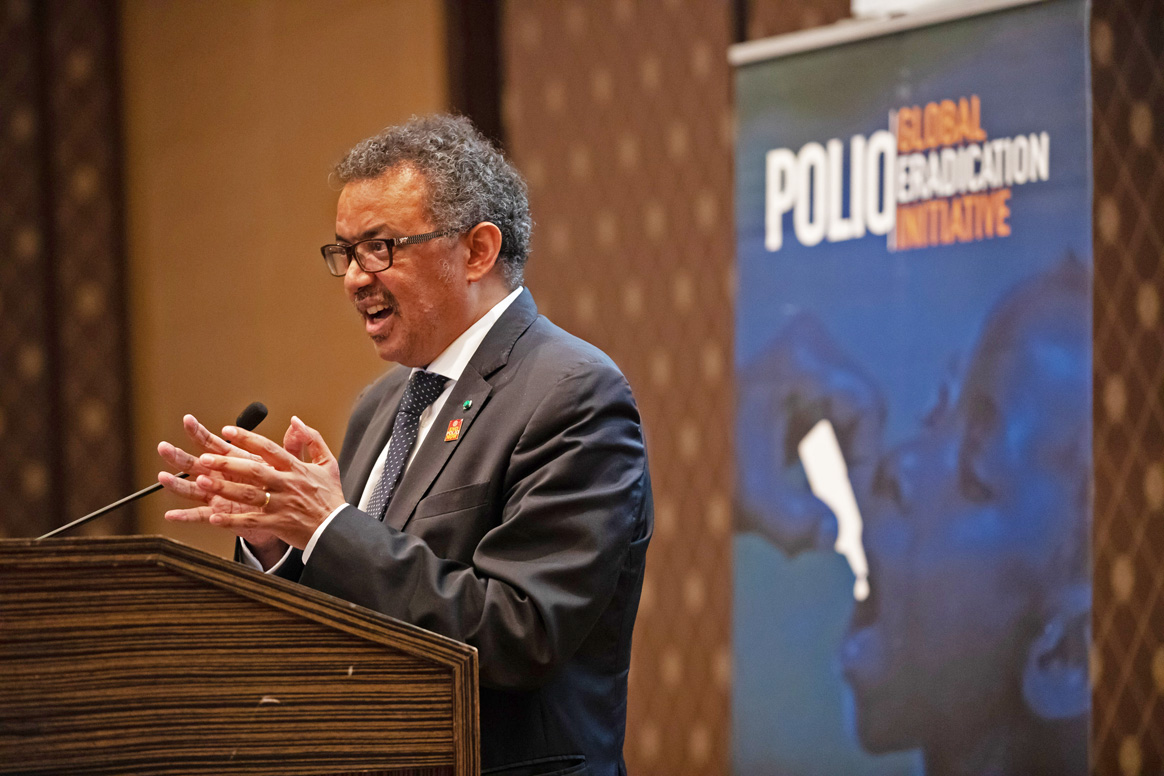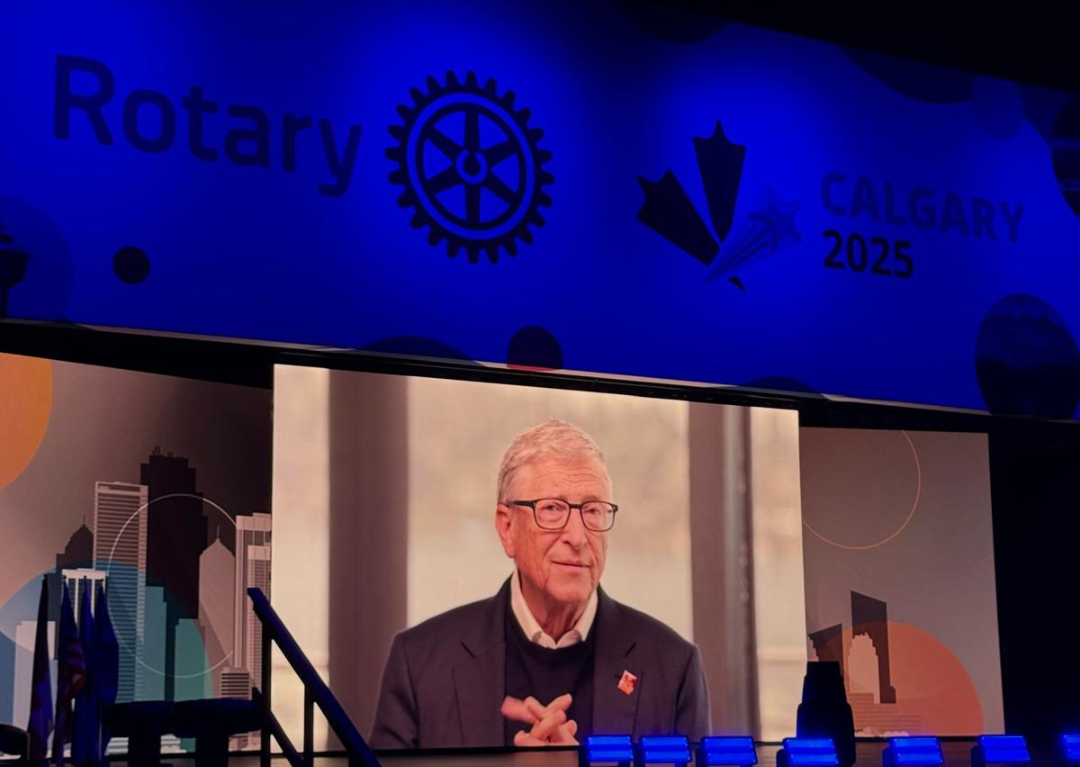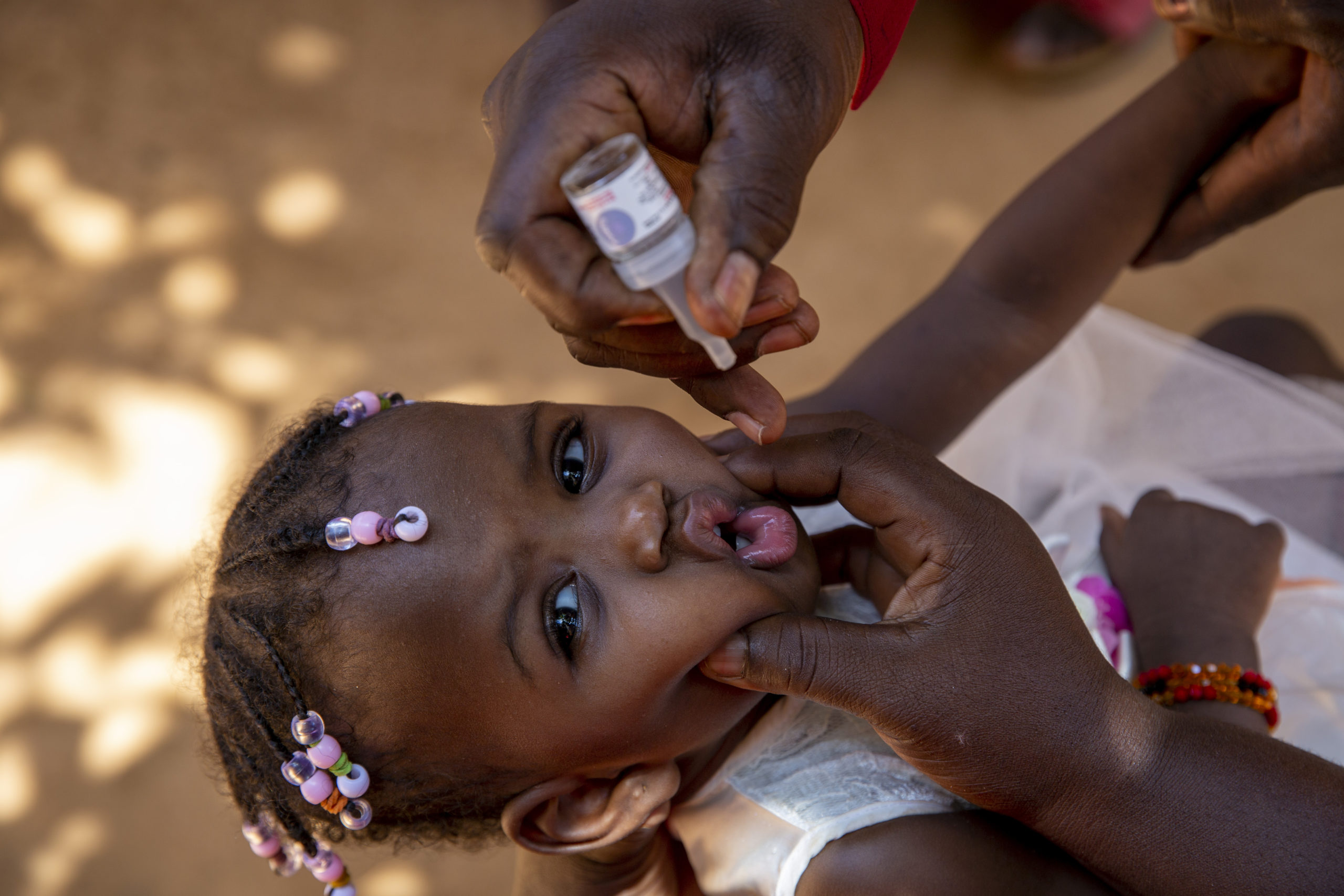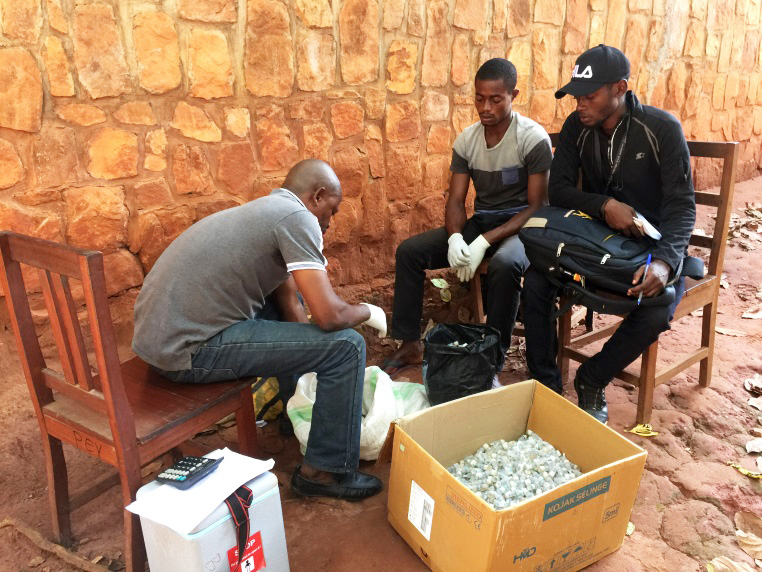
‘Every single vaccine vial matters’ was the message ringing in participants’ ears following meetings between polio eradication counterparts across DR Congo, late last year. Led by the World Health Organization Africa Regional Office (WHO AFRO), health workers, epidemiologists, and experts in poliovirus containment, immunization and waste management came together to evaluate and get oriented on monovalent oral polio vaccine type 2 (mOPV2) safe usage and handling.
Participants examined how retrieval, packaging of empty, broken or partially used vaccine vials should be carried out following an immunization response to minimize risk of spillage and leakage, and learned about vaccine inactivation techniques.
“We’re dealing with a special kind of vaccine here – one that comes with significant containment implications,” said Dr Jacob Barnor, WHO AFRO Technical Officer for Poliovirus Containment. “The focus of these meetings was how we improve handling and accountability controls for mOPV2 – the only tool we have to effectively combat vaccine-derived poliovirus type 2 outbreaks ̶ so that we don’t see more of these outbreaks,” he added.
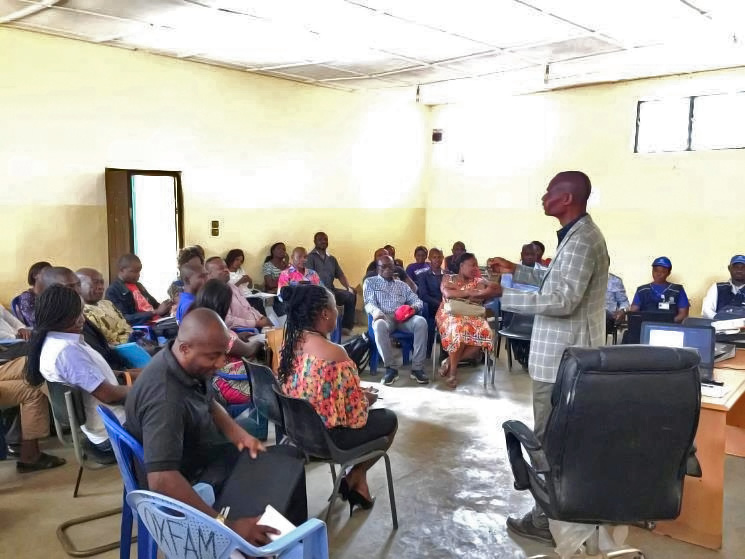
Since the declaration of eradication of type 2 wild poliovirus in 2015, to prevent the strain from resurging WHO has urged countries around the world to destroy or securely contain type 2 wild poliovirus materials. Strict measures for the containment of the weakened but live type 2 oral polio vaccine virus (OPV2) also exist and came into play after WHO ordered its removal from routine use in 2016.
The reason for its removal being that although effective in providing immunity against type 2 polio, in rare instances and given the right conditions, OPV2 can mutate into a form which can cause paralysis and death just like the wild virus. This reversion to virulence is known as type 2 vaccine-derived poliovirus (VDPV2).
The only oral polio vaccine now containing the OPV2 component is mOPV2, reserved for special use in responding to VDPV2 outbreaks.
“It’s a Catch-22. Circulation of VDPV2 can only be stopped by the live vaccine itself, contained in mOPV2,” said Dr Pascal Mkanda, WHO AFRO Polio Eradication Programme Coordinator. “The decision to use it, because of its implications, is not taken lightly. An advisory committee carefully weighs the risks and benefits of using mOPV2 and the vaccine is only released for use by the authority of WHO’s Director-General,” he added.
“We need to make sure that when mOPV2 is used in an immunization response, that it is used only when and where it is needed, and that every last vial is accounted for to prevent mismanagement. This requires a coordinated and careful approach across different partners and sectors. And this is what these meetings were all about: improving understanding of the various stakeholders to mitigate risks,” he said.
The evaluation and coordination meetings took place in Kinshasa, Gemena, Likasi and Goma, and involved more than 109 participants. Feedback has been positive with local health workers expressing appreciation for the guidance provided.
DRC is currently affected by an ongoing circulating vaccine-derived poliovirus type 2 outbreak. In 2018, 20 cases were reported. One case has been reported this year to date.
